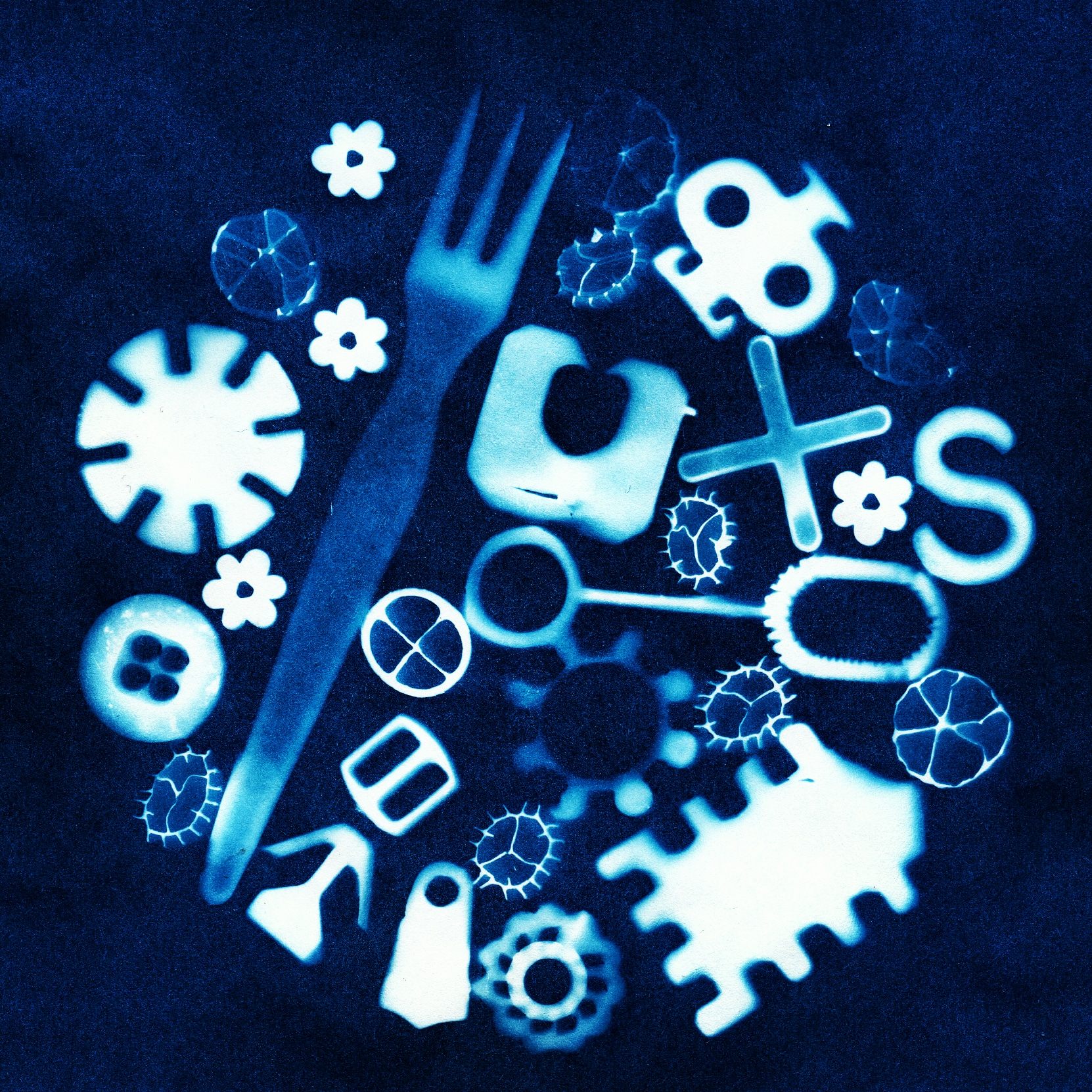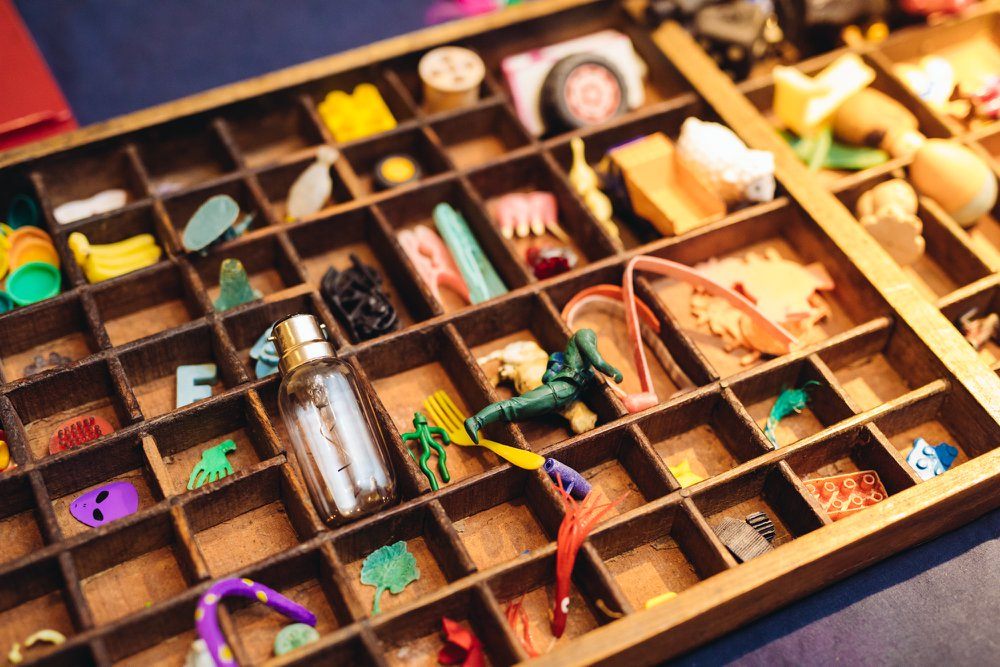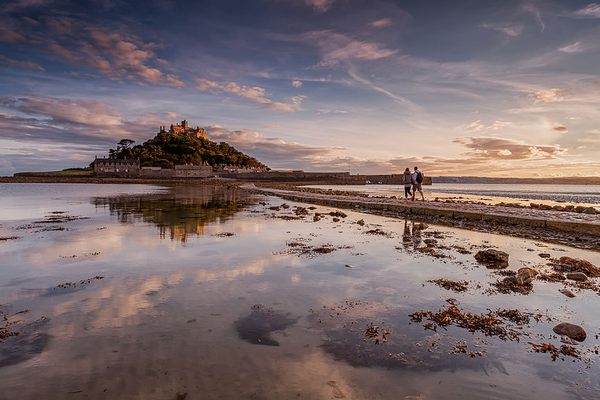The Artist Making Tapestries Out of Aquatic Trash
Jo Atherton’s colorful works turn our plastic crisis into a meditation on memory and time.

Jo Atherton’s tapestries can’t be ignored. They’re filled with texture, movement, and color. When placed on the blank walls of galleries, they’re like fishing lures for the eye: visitors will spot them from across the room and hone on in.
“Often, people are drawn to them,” says Atherton. “They don’t quite know what they’re looking at … It’s only when they get up close that they have that shock moment of, ‘Oh my God, it’s rubbish!’”
This is not a judgement. Atherton, a freelance artist based in Bedfordshire, England, literally makes art from garbage. Some of it is old garbage—pieces of pottery and glass from ancient Rome, lent gravitas by the passage of time. Some of it is slightly more recent, like the nests of rope, fishing net, and colorful plastic doo-dads that make up those sneaky tapestries, which she calls “Flotsam Weaving.” She finds all of her materials herself, in the depths of the Thames and along the low-tide lines on Cornwall’s beaches.

Strange as it may sound, it’s a good time to work in washed-up plastic. For one thing, there’s a lot of it: floating plastic bits outnumbered marine plankton six to one way back in 1997, and things have gotten far worse in the two decades since. For another, the public-interest pendulum is swinging towards the issue: over the past few years, cities have done away with single-use bags, and supermarket chains have begun to phase out plastic packaging.
This is especially true in the U.K., Atherton says, where the recent premiere of the nature documentary series Blue Planet II has gotten all sorts of people talking about ocean plastic, even in her inland community of Bedfordshire. (Just yesterday, Wimbledon announced a ban on plastic straws.) And we’ll be talking about it for a while: minus some kind of miraculous microbial intervention, even a thin plastic bag takes hundreds—or maybe thousands—of years to break down.

It is this longevity that draws Atherton the most. “I’ve always been somebody that has collected,” she says, “and I’ve always wondered about the history of objects that I’ve found.” Her time-hopping tendency goes in both directions: “I look to the past, but also to the future,” she explains. “How is my lifestyle going to be represented by the objects i’m leaving behind? The fact that plastic has this enduring legacy, and it is going to be around for hundreds of years—it kind of suits that interest.”
Atherton prefers to beachcomb in Cornwall, on the U.K.’s southwest coast. “A lot of material washes up in the winter because of the Gulf Stream,” she says, and she and other seekers pick up stuff from all corners of the Atlantic: the West Indies; the Eastern seaboard; Nova Scotia. Atherton describes the tideline as “a story,” and scavenging along it as “an act of reading.”

Often, she must imagine the characters that populate the resulting tales: What kid played with this plastic soldier? Who disobeyed their parents and released this now-popped balloon? But sometimes, the real ones make themselves known—as when she found a fisherman’s tag that had floated to Cornwall after detaching from a lobster buoy in Maine. “I thought, ‘I’ll type his name into Facebook and see if I can find him,’” she says. “And sure enough, I could.” Later, they talked on the phone, and realized they share a birth year, 1979.
Experiences like this inspired her Flotsam Weaving series, which she says is about “the threads of stories … [and] the similarity between text and textile.” More recently, she has been exploring other media, including printing and cyanotype. For these works, she arranges tiny bits of plastic in repeating, often circular patterns. Silhouetted and abstracted by ink or photochemicals, they look like plankton viewed through a microscope. “Prehistoric plankton settled onto the ocean floor and slowly turned into oil,” she says. “That’s now what we’re making our plastic from … the prints are a way of getting people thinking about these deep-time connections.”

When she’s looking to dive into an era that falls between prehistory and the 1970s, Atherton focuses her collecting on the River Thames, where searchers have found everything from medieval pewter toys to a 30,000-year-old wooly rhinoceros skull. She is a permit-carrying mudlarker, which means she is allowed to grab her Wellingtons and tromp through the muck in search of trash-turned-treasure.
There is plenty of this, too. The ancient Romans didn’t have plastic to toss, but “it almost reveals the same aspects of human nature,” she says. “We’ve been chucking stuff away for thousands of years.” The best thing she’s found, she says, is an intaglio from about 2000 years ago, depicting the head and shoulders of a woman bearing an elaborate hairdo and a serious expression. “It would have been used to impress wax” on the back of parchment, Atherton says. “It’s almost like a selfie—reproducing her own image on the correspondence she was sending.”

Atherton is always seeking connections like this, which provide viewers with an entry point into topics that might otherwise seem overwhelming, or guilt-inducing. “People don’t need to be spoon fed by [other people] saying ‘Isn’t plastic terrible’—we know all that,” she says. “[I want them] to get up close to the work, and see for themselves the range and variety of objects that are out there that we’re leaving behind … just to act as a trigger for people to think beyond their own timescale, their own lifetime.”
After all, once everyone alive on Earth today is gone, our plastic junk will still be there—whether other humans are around to puzzle over it or not.




























Follow us on Twitter to get the latest on the world's hidden wonders.
Like us on Facebook to get the latest on the world's hidden wonders.
Follow us on Twitter Like us on Facebook